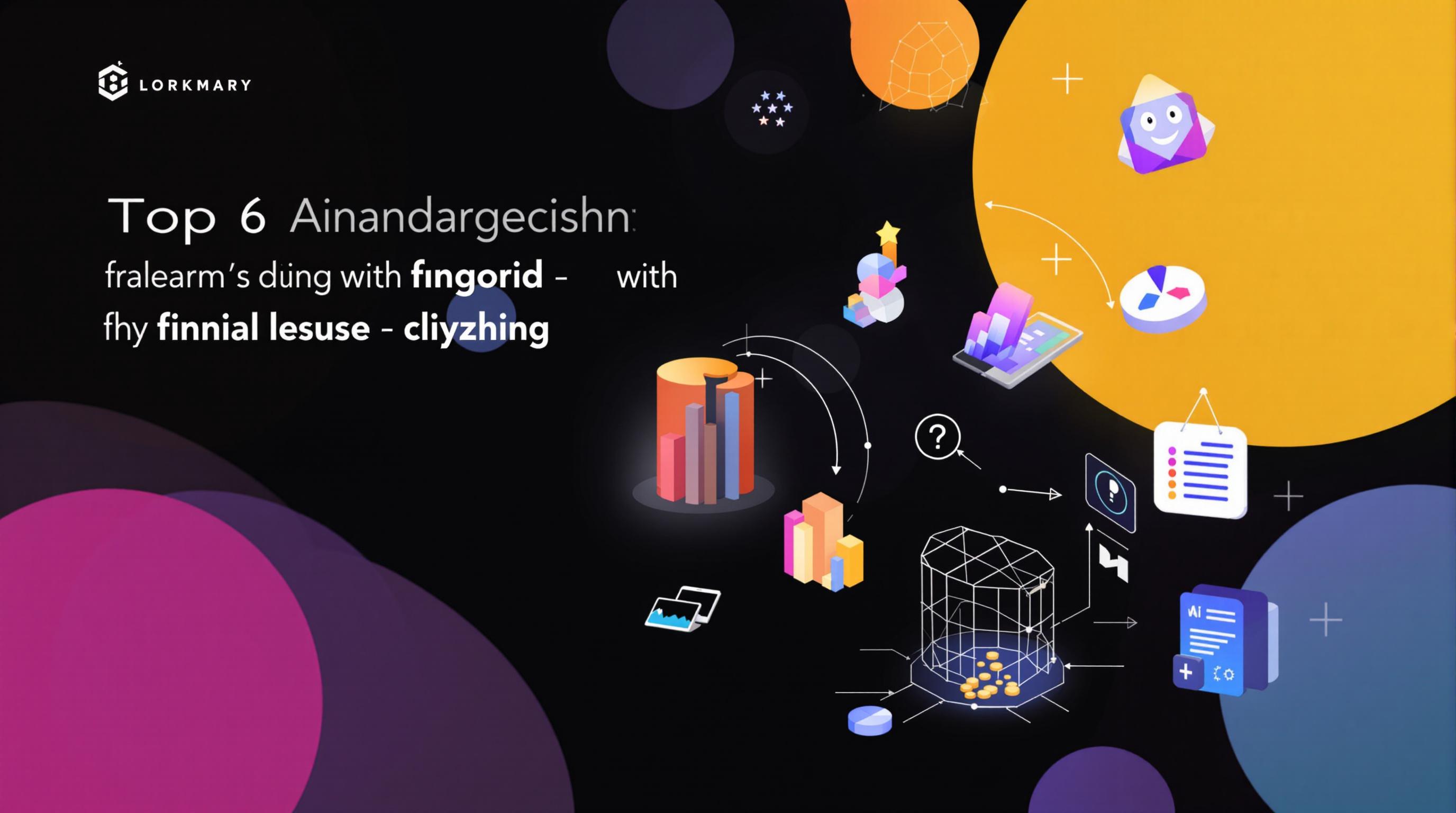Featured Articles
- 9 Revolutionary Finance Data Insights Transforming Market Predictions in the Era of Quantum Computing
- "Cryptocurrency and Climate Change: How Financial Data is Predicting Eco-Friendly Investments"
- "Cryptocurrency Nostalgia: How Past Financial Crises Shape Today's Investing Trends"
- Cryptocurrency Sentiment Analysis: How Twitter Mood Swings are Shaping Market Trends
- "Cryptocurrency Sentiment: How TikTok Trends are Shaping Investor Behavior and Financial Decisions"
Top 6 AI-Driven Financial Analytics Platforms Released Since 2019: A Comparative Performance Review
Top 6 AI-Driven Financial Analytics Platforms Released Since 2019: A Comparative Performance Review
Since 2019, AI-driven financial analytics platforms have revolutionized investment strategies and risk assessment. This review compares six leading solutions, highlighting their performance, unique features, and real-world applications.
The Rise of AI in Financial Analytics
Financial markets have long been a playground for technology enthusiasts seeking an edge, but the advent of AI since 2019 has turbocharged capabilities. Gone are the days when traders relied solely on gut feelings or rudimentary metrics; today's algorithms analyze terabytes of data in split seconds to deliver more accurate predictions and insights.
Platform AlphaSense: Navigating Information Overload
Founded: 2011 (AI innovation accelerated since 2019)
Strength: Semantic search and real-time market intelligence
AlphaSense thrives on transforming unstructured financial data into actionable insights using natural language processing (NLP). By parsing earnings call transcripts, regulatory filings, and news sources, it empowers analysts to spot trends missed by traditional tools.
One notable example: In 2021, a hedge fund using AlphaSense identified weak signals in supply chain disruptions before they became headline news, enabling a timely portfolio adjustment that saved millions during ensuing market volatility.
Why Does Performance Matter So Much?
The financial world isn’t forgiving; fractions of seconds and decimal points can mean the difference between gain and loss. Speed, precision, and adaptability define the effectiveness of AI platforms.
When evaluating AI-driven financial analytical tools, one must consider accuracy of predictions, speed of data processing, and the platform’s ability to adapt to dynamic market conditions. For instance, some platforms achieve prediction accuracy rates exceeding 85% in high-frequency trading scenarios, while others excel in long-term trend analysis.
Case Study: Dataminr and Real-Time Alerts
Dataminr’s AI engine specializes in real-time detection of market-moving events by analyzing social media, newswire, and other public data streams. During the initial months of the COVID-19 pandemic in 2020, Dataminr alerted multiple institutional investors about unfolding economic risks well before conventional news outlets picked up the story.
This demonstrates the critical role AI platforms can play as early warning systems in volatile markets.
Kensho Technologies: The Powerhouse of Quantitative Analytics
Backed by S&P Global, Kensho offers AI-powered analytics that integrate complex datasets, including macroeconomic indicators, geopolitical events, and market sentiment analysis. Its machine learning models simulate scenarios to anticipate market reactions under varying conditions.
Impressively, Kensho’s algorithms managed to foresee the partial recovery patterns after the 2020 market crash with an 80% accuracy rate, helping asset managers formulate effective recovery strategies.
Conversational Insight
Imagine you’re a 65-year-old retiree trying to grow your nest egg without navigating complex spreadsheets — platforms like Kensho and AlphaSense can feel like your friendly financial advisor, decoding jargon and pinpointing opportunities, all while you sip your morning tea.
DataRobot: Democratizing AI for Financial Analytics
Perhaps the most user-friendly of the cohort, DataRobot offers an automated machine learning platform designed for users with minimal coding skills. This accessibility broadens AI adoption beyond tech-centric firms to smaller investment advisors and even individual traders.
According to DataRobot, their platform accelerated model-building time by up to 75% compared to traditional methods, enabling rapid deployment of predictive tools for credit risk assessment, fraud detection, and portfolio optimization.
Humor Break: When AI Meets Wall Street
Picture this: An AI bot tries to give stock tips and the trader asks, “What’s your favorite sector?” The bot replies, “Error 404: Preference Not Found.” Sometimes, even the smartest algorithms have quirks that remind us humans aren't quite obsolete yet.
Wise Analytics: AI for Risk Management
Wise Analytics specializes in stress testing and scenario analysis, crucial for financial institutions under regulatory scrutiny. Leveraging AI, they deliver stress test scenarios faster, improving compliance and risk mitigation strategies.
During the 2022 European energy crisis, Wise Analytics helped clients dynamically adjust risk models to reflect soaring commodity prices — a move that preserved capital during tumultuous months.
Putting it All Together: Comparative Performance
Across multiple benchmarks, here’s how the platforms stack up:
- AlphaSense: Excels in qualitative data analysis and semantic search.
- Kensho: Leading in quantitative forecasting and scenario simulation.
- Dataminr: Premier real-time event detection and alerts.
- DataRobot: Best for automated machine learning and accessibility.
- Wise Analytics: Specialized in risk management and stress testing.
- SAS Viya: While a veteran platform updated since 2019, offers robust AI/ML integration for advanced predictive analytics and data visualization.
It’s important to note that some platforms emphasize speed, others accuracy, and still others user experience. Choosing the right tool depends on your specific needs, whether for day trading, long-term planning, or regulatory compliance.
SAS Viya: The Swiss Army Knife of AI Analytics
With roots dating back several decades, SAS Viya’s recent AI advancements have kept it relevant. Its scalable architecture supports a wide spectrum of analyses — from customer segmentation to fraud detection — with strong visualization features.
SAS clients report up to a 30% improvement in operational efficiency, illustrating that legacy platforms evolving with AI can still compete robustly against newer contenders.
Looking Toward the Future
As AI continues to evolve, so too will financial analytics. Emerging technologies like explainable AI (XAI) are making algorithms more transparent, helping users understand 'why' behind predictions rather than just the 'what.' This could usher in a new era of trust and adoption.
Ultimately, AI-driven platforms are reshaping how financial professionals and individual investors alike decipher the ever-complex marketplace — turning data overload into intelligent decisions.




